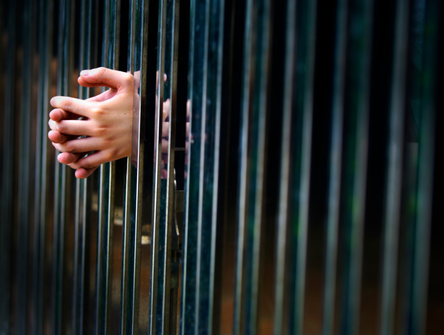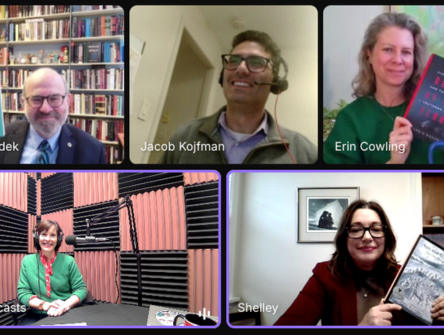A Jordan rule for minors?
The top court could impose a lower ceiling for youth trials.

Equality before the law (as the appeal courts keep reminding us) doesn’t mean everyone gets treated exactly the same way. The Supreme Court of Canada could be getting ready to remind us again.
The high court recently heard an appeal in the case of K.J.M. v. Her Majesty the Queen, a case freighted with some interesting implications for youth trials. The facts of the case itself are commonplace enough: a brawl between teens at a boozy party, triggered by what the trial judge described as “some inexplicable, but probably typical teenage reason,” and a 15-year-old kid convicted of aggravated assault and possession of a weapon for a purpose dangerous to the public peace (a box cutter).
K.J.M.’s trial took 18 and a half months to complete. In July 2016, four months before K.J.M.’s trial ended, the Supreme Court released its game-changing Jordan decision, which set presumptive limits on the length of trials going forward: 18 months in provincial court, 30 months in superior court.
K.J.M. applied for a stay on the argument that he was not tried in a reasonable period of time. The provincial court dismissed his application. So did the Alberta Court of Appeal. The SCC has reserved judgment.
The Jordan decision triggered a wave of stay applications across the justice system — but because the decision itself didn’t mention youth court, no one knows for certain how the Jordan standard applies to minors on trial.
The SCC is expected to answer that question, along with a few others. Should young offenders be entitled to trial durations shorter than the standard set by Jordan? Or, to pose the question the Alberta Court of Appeal asked, should youth trials be permitted to run even longer than 18 months because the youth criminal justice system’s emphasis on “rehabilitation and reintegration” can get in the way of wrapping up a trial quickly?
In a sense, the youth courts already had a Jordan standard prior to 2016. The concept that youth trials should be completed in as short a span as possible is built into the Youth Criminal Justice Act itself, in the section outlining its principles: “… timely intervention that reinforces the link between the offending behaviour and its consequences, and; the promptness and speed with which persons responsible for enforcing this Act must act, given young persons’ perception of time …”
“The system considers it especially important for young people that there not be a long delay between the offence and the sentence — that the defendant experience more immediate consequences,” says Michael Dineen of Dawe Dineen in Toronto.
The courts recognize that a teenager is going to experience 18 months or more in court as a far longer period than a 30-year-old would. “When you’re 14 or 15 years old, even a 12-month trial makes up a vast amount of your life so far,” says H. Markham Silver, QC, of Calgary. “You remember how long summers lasted when you were a kid?”
All three Alberta Court of Appeal justices agreed that youths have a right to be tried within a reasonable delay. Two of them — Justice Wakeling and Justice O’Ferrall — concluded that K.J.M.’s trial didn’t violate the Jordan standard (Justice Wakeling concluded that one month of the trial delay was caused by an administrative error and didn’t count towards the Jordan cap). Justice Veldhuis dissented, dismissing Justice Wakeling’s argument that a trial duration limit for youths should be set by Parliament and offering one of her own: 15 months, roughly what the system saw as the reasonable limit for youth trials pre-Jordan.
Because the Jordan ceiling “was set based on the inferred prejudice faced by adults,” Justice Veldhuis wrote, “it follows that the enhanced prejudicial effects on young persons require the court to set a lower ceiling, above which delay is presumptively unreasonable.”
Many observers in the legal community think the SCC justices will rule that youth trials should be shorter than adult trials (the Jordan limit was their idea, after all). “Guessing what the SCC is going to do on a specific case is little better than reading tea leaves,” says Michael Lacy of Brauti Thorning LLP in Toronto. “But I think the court will recognize the need for young offenders to be tried faster.”
“Jordan was a bold choice for (the Supreme Court justices),” says Drew Yewchuk, a staff lawyer with the University of Calgary’s Public Interest Law Clinic. “And since they don't really feel the frontline pressure that trial judges feel, it's unlikely anything has caused them to lose their nerve.”
The easiest thing for the Supreme Court to do would be to set another hard cap — a Jordan rule for minors. “I'm more confident they'll stick with the presumptive ceiling approach, whether they keep it at 18 months or move it down to 15,” says Yewchuk. “The dissenting justices in Jordan already made the case against presumptive ceilings.”
Such an approach would have the virtue of simplicity — but some argue it would be a poor fit with the youth court system, where alternative measures meant to keep young offenders out of detention facilities can complicate the calculation of trial lengths.
There’s also a question of fairness. Let’s say the Supreme Court introduces a Jordan rule for youth court — a hard cap of 15, or even 12 months.
The law says you’re a youth until age 18. Silver offers a hypothetical comparison: one youth charged with robbery who turns 18 the day after being charged, and another young person charged in the very same robbery who turned 18 the day before being charged. The first youth would have the benefit of the lower trial duration cap set by the SCC; his alleged co-accused — just days older — would not.
“It’s obvious to me that we need a different standard,” he says. “One that gives judges more discretion to look at the individual circumstances of a case and decide how much of the delay was reasonable, or not.”


